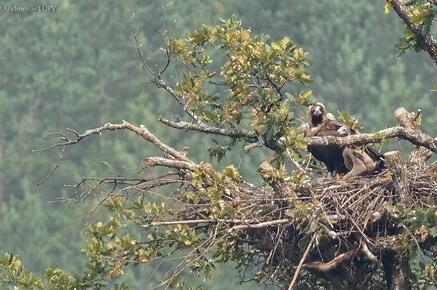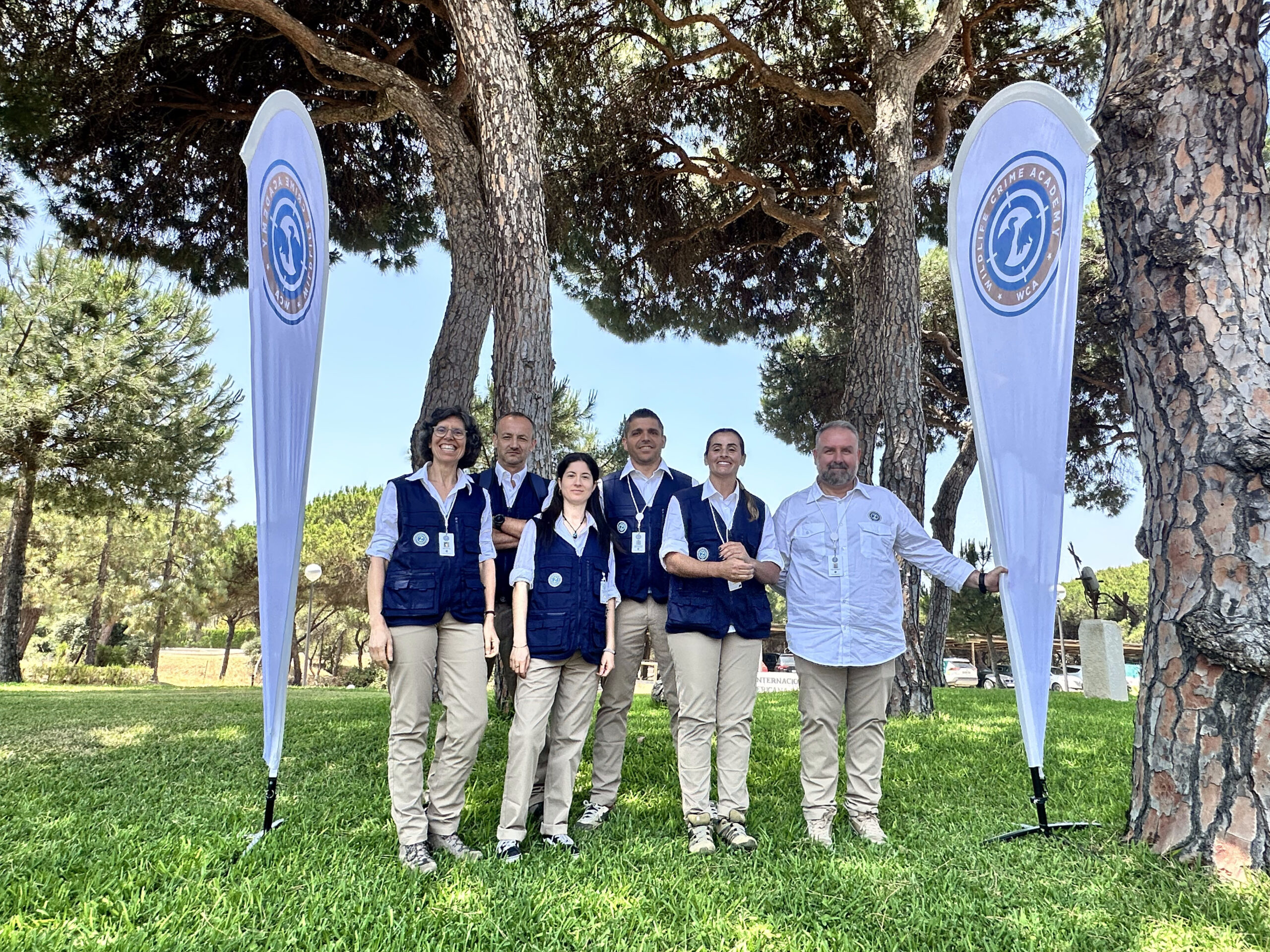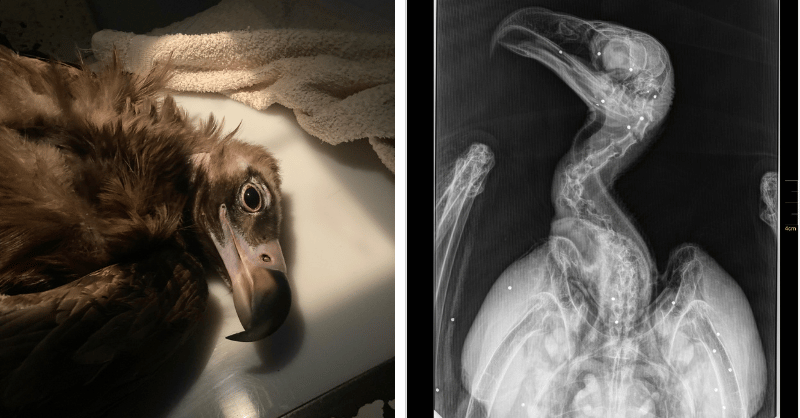After following the Cinereous Vulture Monsanto from Portugal for 16 months, his GPS transmitter alerted us that the bird was not moving anymore. What happened?
Rescuing, rehabilitating and releasing Monsanto
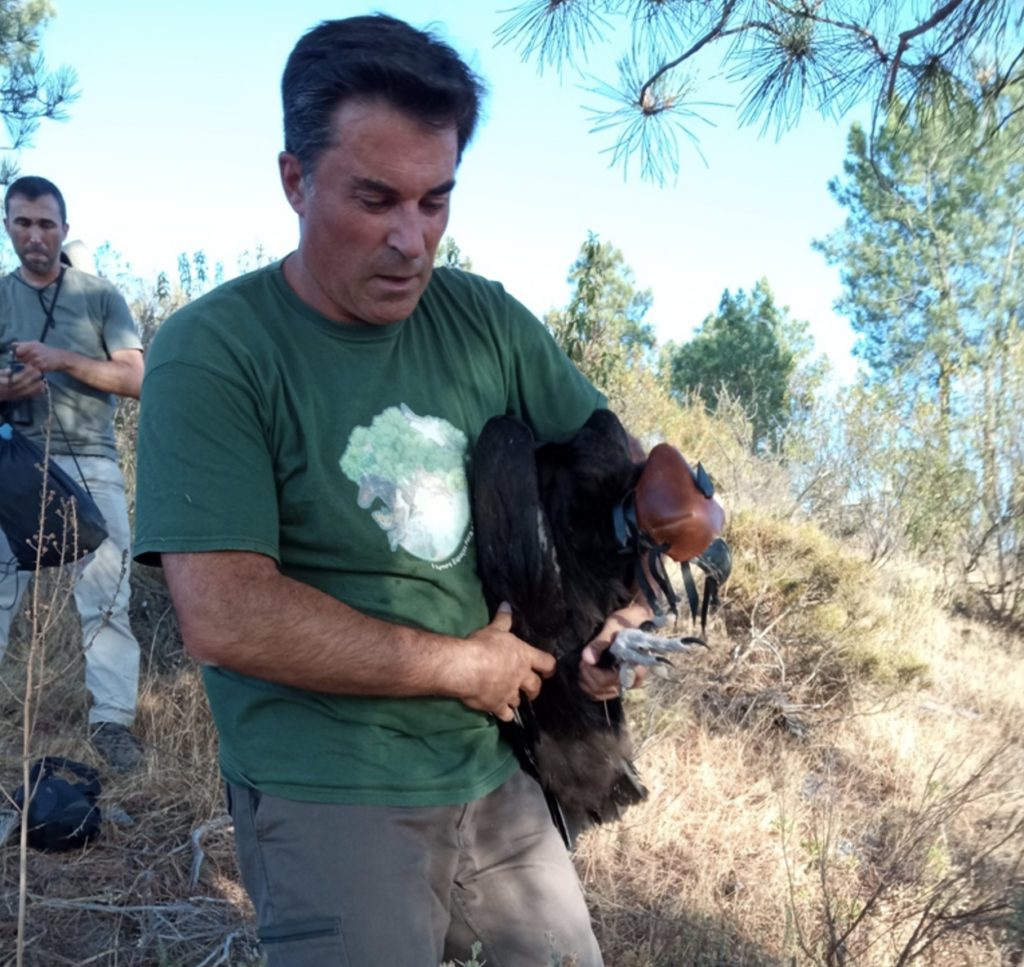
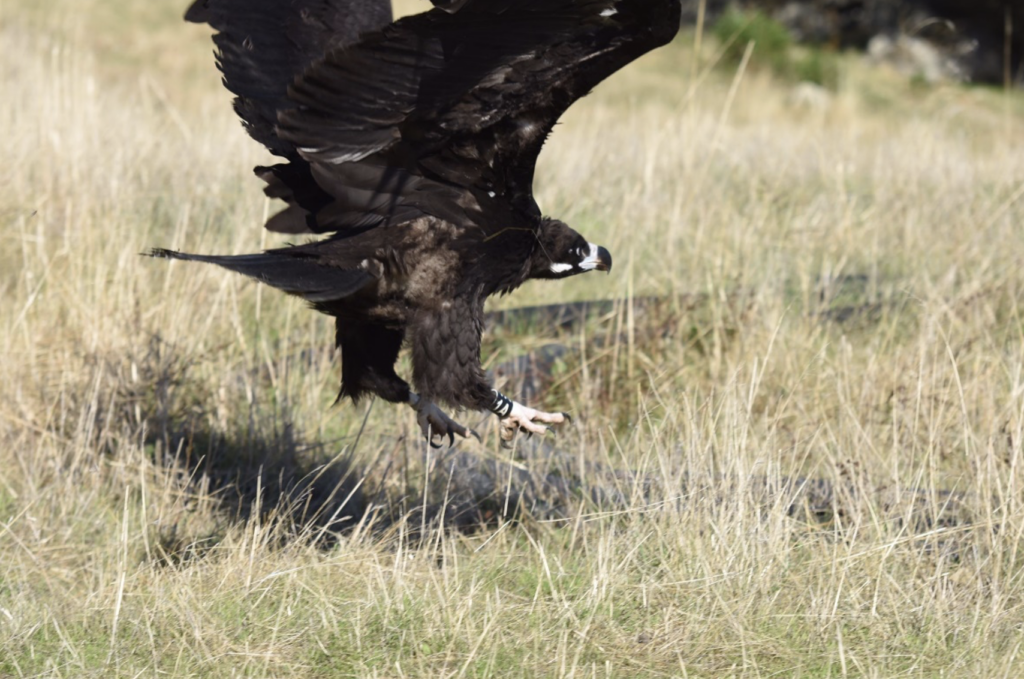
The male Cinereous Vulture Monsanto hatched in the Herdade da Contenda (HC) estate in Portugal back in 2021. As part of a monitoring programme, our partners at Liga para a Protecção da Natureza (LPN) and HC found the young vulture in a state of great weakness and swiftly transferred it to the CRAS wildlife rehabilitation centre in Monsanto to receive the care he needed. After 80 days of recovery, the bird was baptised Monsanto and was equipped with identification rings and a GPS/GSM transmitter ahead of his release. He was then released back to nature on 4 October 4 2021, and we have been able to closely track his movements ever since.
Monsanto’s GPS signal becomes motionless
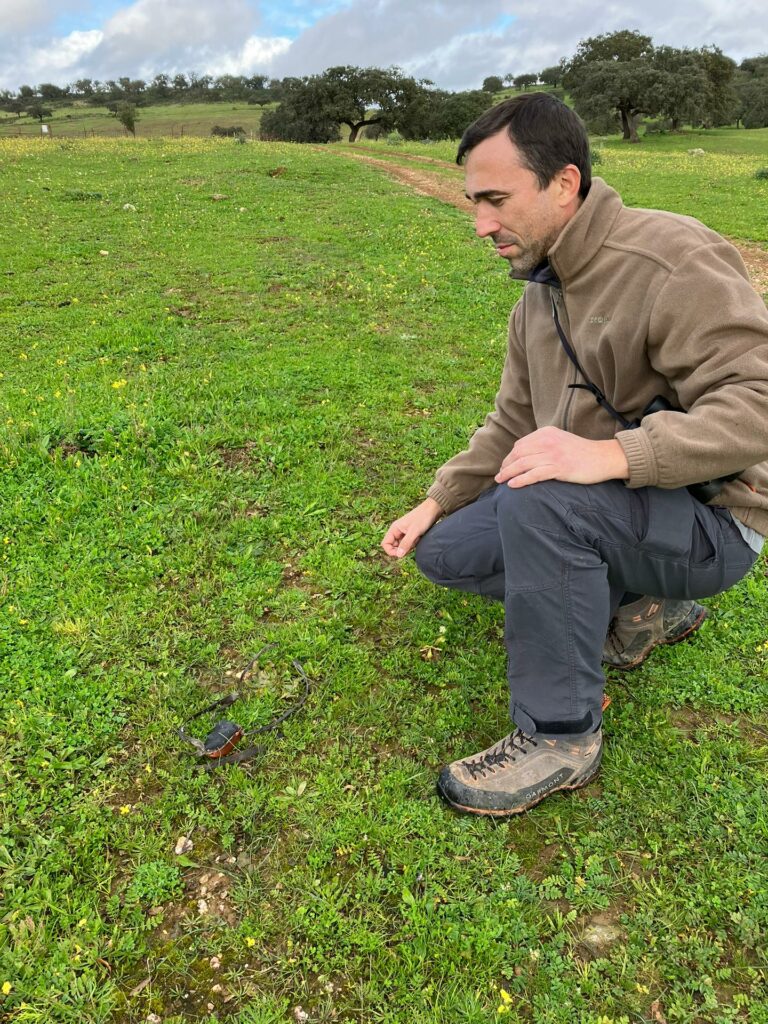
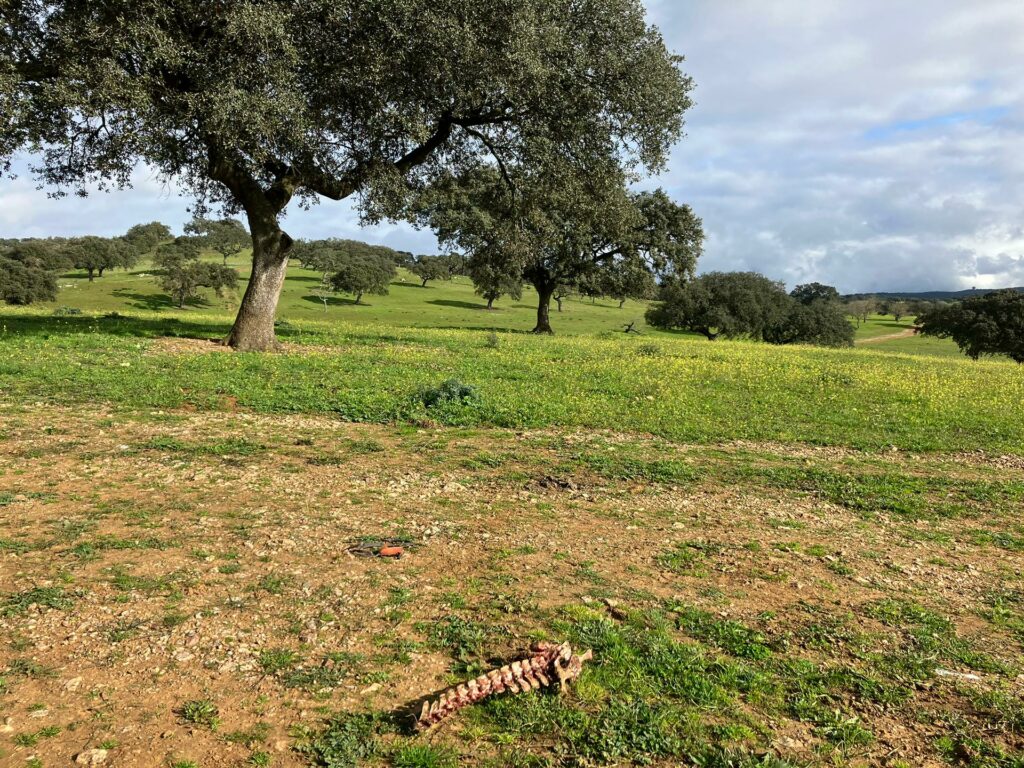
On 16 January 2023, as part of the daily monitoring of bird movements, the Vulture Conservation Foundation (VCF) alerted HC and LPN that Monsanto’s GSM transmitter was motionless. On the same day, a team went to the last known location of Monsanto in Herdade da Negrita near a livestock facility, where they noticed traces of vulture presence and feeding activity. After searching the area, they were able to find the transmitter on the ground and retrieve it. It appears that the transmitter detached itself from the vulture in a natural way. We place GPS transmitters with a harness, which is crossed over the bird’s chest. For the attachment, 3 knots are made, in a way to help guarantee an average of 3 years of follow-up. In the case of Monsanto, the knots came loose a little earlier, in 16 months.
Following Monsanto’s movements for 16 months
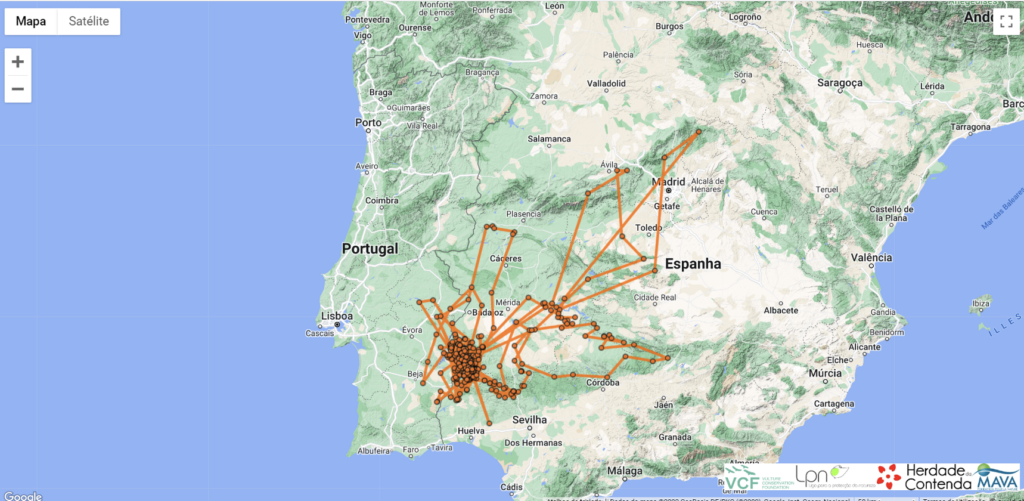
The GPS transmitter on Monsanto’s back allowed us to monitor his movements and behaviour for 16 months. A few days after his release, Monsanto left Contenda and moved eastward, following Sierra Morena and reaching the Natural Park (NP) of Andújar in January 2022, 400 km from its hatching place.
In the following months, from February to May, Monsanto moved a lot, north and south of his hatching place. He went northward passing through Zafra, Aracena, Sierra de S. Pedro (bordering the Serra de S. Mamede), Cáceres and NP Monfragüe. He then travelled south to Elvas, NP Guadiana Valley (in the Serpa area). Monsanto then headed to the north again at Fronteira, Avis, Sousel, then south to Huelva and north to Gredos (Ávila). In May, he reached the NP Sierra Norte of Guadalajara (north of Madrid), which marked the greatest distance away from Contenda – 600 km.
In the summer months, from June to September, Monsanto made excursions of lesser magnitude, remaining in the border areas near Contenda and Barrancos, with displacements to N and NW, in Portugal and Spain, with emphasis on a new passage in the Sierra de S. Pedro. In January 2023, he was recorded in the Sierra Pelada, where the Cinereous Vulture colony closest to Contenda is located.
From October 2021 to January 2022, Monsanto visited Contenda in at least 11 of the 16 months of tracking his movements, revealing a prominent philopatric behaviour (return to its hatching place). Throughout this period, he visited several colonies in the Iberian Peninsula (Monfragüe, Cabañeros, Gredos, Guadarrama, Sierra S. Pedro, Andújar, Sierra Pelada, and Contenda, among others), showing a great connection between the breeding sites and the importance of this network in the dispersal period of young birds.
Monitoring Cinereous Vultures
The Cinereous Vulture naturally recolonised Portugal in 2010 when birds from nearby Spanish breeding colonies began to nest there, almost four decades after becoming extinct as a breeding species in the country. To secure the comeback of the species in the country, monitoring the movements and behaviour of birds is one of the main actions planned within the LIFE Aegypius Return project. The insights from the tracking data will help reveal threats the birds may face and allow the team to carry out more accurate conservation actions.
The LIFE Aegypius Return project
The LIFE Aegypius Return project aims to consolidate and accelerate the return of the Cinereous Vulture in Portugal and western Spain by improving its habitat and foraging conditions, minimising threats and developing national capacities. The project team will implement targeted conservation actions across ten Natura 2000 sites, along almost the entire Spanish-Portuguese border, to double the Cinereous Vulture breeding population in Portugal to at least 80 pairs in 5 colonies and downgrade the national status of the species from Critically Endangered to Endangered by 2027.
LIFE Aegypius Return is co-financed by the EU’s LIFE Programme and has a budget of 3.7 million euros. Its success relies on the involvement of all relevant stakeholders and the extensive collaboration of the leading project partner, the Vulture Conservation Foundation (VCF), with all local partners: Palombar – Conservação da Natureza e do Património Rural, Herdade da Contenda, Sociedade Portuguesa para o Estudo das Aves, Liga para a Proteção da Natureza, Associação Transumância e Natureza, Fundación Naturaleza y Hombre, Guarda Nacional Republicana e Associação Nacional de Proprietários Rurais and Associação Nacional de Proprietários Rurais Gestão Cinegética e Biodiversidade.


